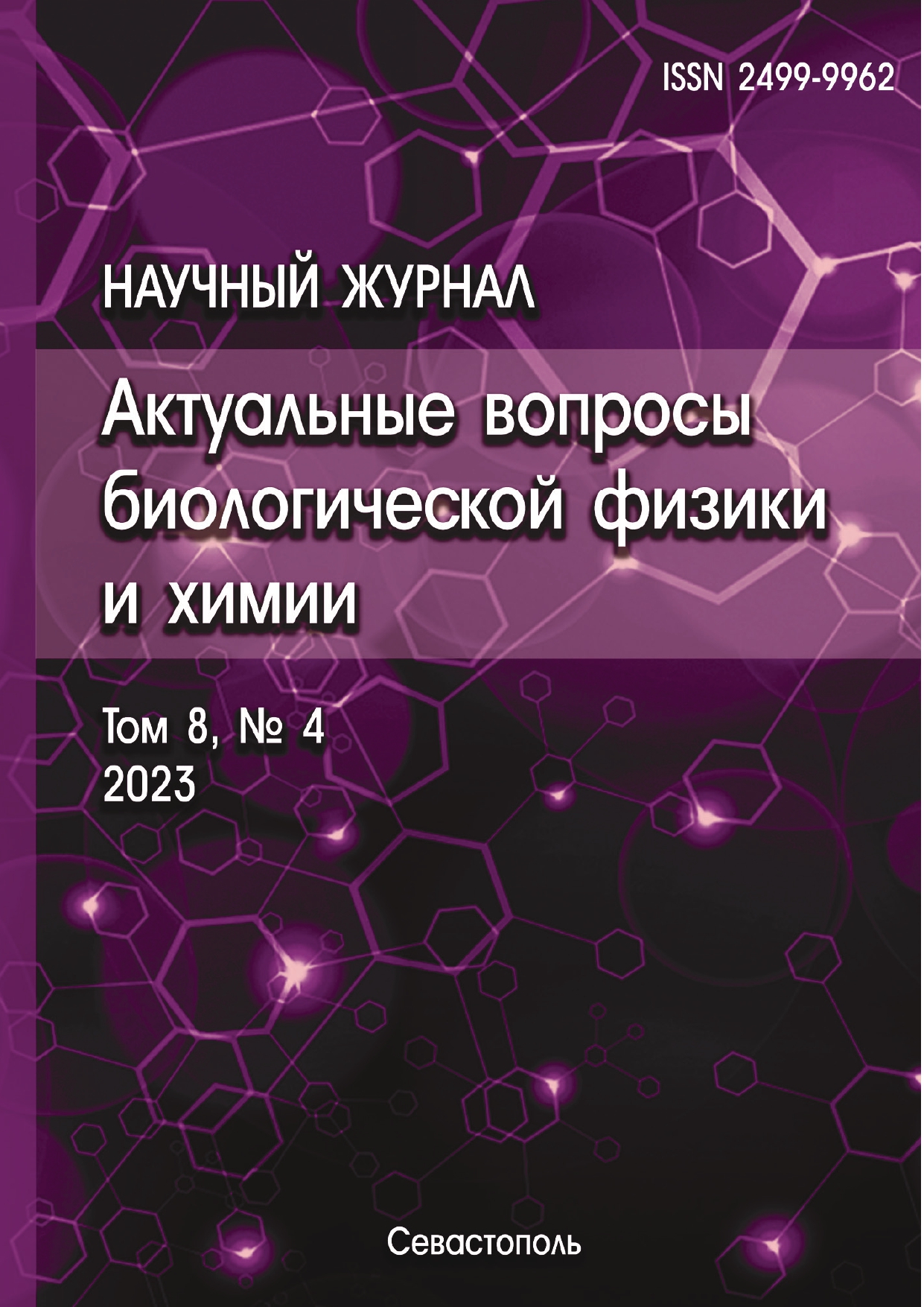Sevastopol, Sevastopol, Russian Federation
Sevastopol, Sevastopol, Russian Federation
Sevastopol, Sevastopol, Russian Federation
The study of the size structure of cultures of marine red Purphurium purpurium (Vogu) Ross and green Tetraselmis viridis Rouch microalgae under batch and quasi-continuous modes of cultivation with different irradiance was carried out. Cell size distribution was determined using a laser analyzer "Laska-TM" and a microscope with a camera. Based on a sample of 50 random cells, the mean diameter value was found. It is shown that in the accumulative mode of cultivation the cell size remains constant. The average cell diameter of Porphyridium cells ranged from 8.9 to 9.3 μm, and that of Tetraselmis from 6.8 to 7.4 μm. The result obtained is supported by literature data on cultivation of the microalga Chlorella protothecoides. The quasi-continuous regime was carried out in the exponential growth phase, when the culture density is low and the only limiting factor is the light flux intensity. It was experimentally found that the average cell diameter of both microalgae increased with increasing irradiance. It is shown that the values of average diameters obtained on the laser analyzer are overestimated than the results obtained using a microscope. The obtained data can serve as a basis for the development of growth models of the accumulative culture of microalgae. The constancy of the average cell size makes it possible to abandon complex distributed cell population models.
Porphyridium, Tetraselmis, size structure, average cell diameter, irradiation
1. Dermoun D. et al. Modelling of growth of Porphyridium cruentum in connection with two interdependent factors: light and temperature. Bioresource technology, 1992, vol. 42, no. 2, pp. 113-117.
2. Akimoto M., Shirai A., Ohtaguchi K., Koide K. Carbon dioxide fixation and polyunsaturated fatty acid production by the red alga Porphyridium cruentum. Appl. Biochem. Biotechnol., 1998, vol. 73, pp. 269-278.
3. Churilova T.Ya., Finenko Z.Z., Akimov A.I. Black Sea microalgae: problems of biodiversity conservation and biotechnological use. Sevastopol: ECOSI-Hydrophysics, 2008 (In Russ.).
4. Belyanin V.N., Sidko F.Y., Trenkenshu A.P. Energetics of photosynthetic culture of microalgae. Nauka. Siberian Branch, 1980 (In Russ.).
5. Trenkenshu R.P., Terskov I.A., Sidko F.Ya. Dense cultures of marine microalgae. Proceedings of the Siberian Branch of the Academy of Sciences of the USSR. Series of Biological Sciences, 1981, vol. 5, no. 1, pp. 75-82 (In Russ.).
6. Orlova T.Y., Sabutskaya M.A., Markina J.V. Changes in the ultrastructure of marine microalgae from different departments in the accumulation culture. Marine Biology, 2019, vol. 45, no. 3, pp. 188-196 (In Russ.). DOI: https://doi.org/10.1134/S0134347519030100; EDN: https://elibrary.ru/WFSGME
7. Zhao J.M., Ma C.Y., Liu L.H. Temporal scaling of the growth dependent optical properties of microalgae. Journal of Quantitative Spectroscopy and Radiative Transfer, 2018, vol. 214, pp. 61-70. DOI: https://doi.org/10.1016/j.jqsrt.2018.04.024; EDN: https://elibrary.ru/YGSHNZ
8. Trenkenshu R.P., Lelekov A.S. Modeling of microalgae growth. Belgorod: CONSTANTA LLC, 2017, 152 p. (In Russ.). EDN: https://elibrary.ru/XTJPCH
9. Wahidin S., Idris A., Shaleh S.R.M. The influence of light intensity and photoperiod on the growth and lipid content of microalgae Nannochloropsis sp. Bioresource technology, 2013, vol. 129, pp. 7-11. DOI: https://doi.org/10.1016/j.biortech.2012.11.032; EDN: https://elibrary.ru/RMMLXT










